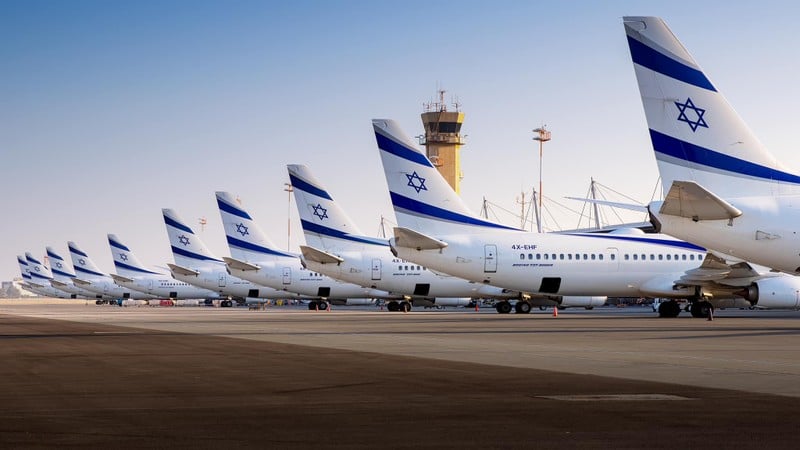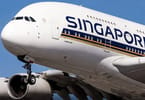Yesterday, I traveled on a United Airlines flight from Shanghai to Guam. The plane was almost empty, perhaps 15 passengers on board.
Looking at reservation load and seat maps on other flights to Guam on United Airlines, it appears flights from Japan, China, and even from Honolulu are flying with very few passengers on board.s
According to a statistic just released from a UK research company, international arrivals into the US territory went down almost 65% after the 2 threats received by North Korea to send a nuclear bomb to Guam.
Rescuing Guam now are the Koreans themselves – the South Koreans. Arrivals are stable, flight loads are excellent, and you find Korean tourists enjoying Guam’s beaches, shops, and restaurants.
The biggest friends, but also the biggest enemies, in Guam’s tourism arrivals is United Airlines.
United Airlines holds a monopoly on direct flights to Honolulu, the gateway to the US mainland for travel to the territory.
United Airlines operates a hub, formerly known as United Micronesia to serve Japan, Korea, China, the Philippines, Australia, and other Pacific islands from Guam.
Here is the problem.
A passenger buying a ticket in Honolulu or Los Angeles wanting to fly to Shanghai, Japan, or any other destination, he or she has to connect in Guam and is not allowed to stop-over in Guam.
Stopping in Guam often triples and quadruples the ticket price.
Airfares from Honolulu to Guam are more expensive than air fares from Honolulu to Europe, but you can fly from Honolulu to Shanghai for example for $639 round trip with a change in Guam. The ticket to Guam alone would be around $2,000. Stopping in Guam to explore Guam tourism would increase your ticket at least 3-fold.
With empty planes, United has only 2 alternatives – adjust air fares or cut routes. Guam tourism is at the mercy of this decision.
A study by ForwardKeys reveals that the imposition of new UN sanctions, followed by the ratcheting up of hostile rhetoric between Donald Trump and Kim Jong Un on August 9, triggered a decline in tourism to Guam. It was then that Donald Trump warned that any threat to the USA would be met with “fire and fury” and Pyongyang responded, saying it was “carefully examining” a plan to strike Guam, home to a US military base. In the five weeks that followed, arrivals of people staying between four and twenty-one nights (a typical tourist visit), fell by 9%, with arrivals from Japan, traditionally Guam’s most important origin market, falling 30%.

The fall in travel to Guam would have been much more substantial, were it not for a remarkable rise in enthusiasm for the Pacific island from South Korea. Prior to 9th August, arrivals in Guam were up 11% but that was due to a 41% increase in travel from South Korea, off-setting a 13% decline in visits from Japan.
In producing its reports, ForwardKeys analyzes more than 17 million flight booking transactions a day, drawing data from all the major global air reservation systems and selected airlines and tour operators. This information is enhanced with further independent data sets, including flight search and official government statistics plus data science to paint a picture of who is travelling where and when, and to predict future travel patterns.
Looking deeper at people’s plans to travel to Guam by analyzing travel bookings made to date (for stays of the same duration), it is clear that after August 9, overall bookings fell by 43%, benchmarked against the same period last year and bookings from Japan fell by 65%. By comparison, bookings from South Korea fell by 16%.

Looking ahead, by analyzing the state of current bookings made for travel to Guam up to the end of the year, the current situation is that overall bookings are 3% behind where they were at the same time last year. Current bookings from Japan are 24% behind; from the USA, they are 17% behind; from Hong Kong, they are 15% behind and from China, they are 51% behind. However, on a much more encouraging note, current bookings from South Korea are 14% ahead.

The strong growth in bookings can be partly attributed to increased air capacity between Guam and South Korea. From September 13, 2017, Air Seoul became the sixth carrier from Korea to provide direct services to Guam. The initial schedule is a five times weekly operation but Air Seoul will increase this to daily operations in October.
Mario Hardy, CEO, Pacific Asia Travel Association, commented: “We live in a world of constant volatility, uncertainty and political instability which is of great concern for many destinations around the globe. The island of Guam is beginning to feel the impact of the war words between two nations’ leaders and reminds us of the fragility of the travel and tourism industry.”
Olivier Jager, CEO, ForwardKeys, concluded: “Whilst the stall in bookings for Guam is a concern, current bookings are a snap-shot as of now and it is still possible for the momentum to recover, if for example, the saber-rattling has caused people simply to book later (i.e., closer to the date of travel) rather than not to come. One cannot be surprised that the escalating tension between North Korea and the USA has deterred visitors to Guam. What is interesting is the extraordinary extent to which the South Korean market is the ‘white knight’, bucking the trend. I can only speculate that South Koreans have been enthused by Guam’s promotional claims that it is the perfect destination for romance – and by going there, are demonstrating they are much more interested in making love than war!”
WHAT TO TAKE AWAY FROM THIS ARTICLE:
- A passenger buying a ticket in Honolulu or Los Angeles wanting to fly to Shanghai, Japan, or any other destination, he or she has to connect in Guam and is not allowed to stop-over in Guam.
- Looking ahead, by analyzing the state of current bookings made for travel to Guam up to the end of the year, the current situation is that overall bookings are 3% behind where they were at the same time last year.
- Looking deeper at people's plans to travel to Guam by analyzing travel bookings made to date (for stays of the same duration), it is clear that after August 9, overall bookings fell by 43%, benchmarked against the same period last year and bookings from Japan fell by 65%.






















